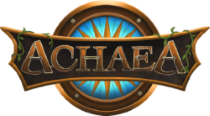18.10.23 Clothing Types
The items defined below, for the truly unknowing, include blouses, bodices,
cravats, doublets, handkerchiefs, hose, jerkins, kerchiefs, kilts, leggings,
pants, ribbons, ruffs, shifts, shirts, skirts, slips, snoods, stolas, stoles,
surcoats, sweaters, tabards, togas, trousers, tunics, vestitures, vestments, and
wimples. There are, necessarily, some OOC references for the sake of brevity and
clarity.
Blouse
------
A blouse is a feminine shirt which can be sleeved or sleeveless, collared or
collarless.
Bodice
------
A bodice is either the top half of a dress, or (when worn separately) a
vest-like garment that extends from the shoulder to the waist. It is usually
laced like a corset, but worn as an outer garment.
Cravat
------
When a length of cloth is tied around the neck, it becomes a cravat. It may
be long and flowing or neatly tucked into a button-hole or waistcoat, and
may be tied in a simply knot or a more stylish bow.
Doublet
-------
A doublet is a close-fitting outer garment. It may have sleeves or not.
It may even have a short skirt, or not. A doublet also refers to quilted
clothing worn under armour.
Handkerchief
------------
To be used to blow one's nose during boring meetings, or to drop to gain
someone's attention. A small rectangle, usually of a softer material and a
light colour. Not to be confused with a kerchief, which can be worn on the
head.
Hose
----
Hose are close-fitting, footed leggings, often worn by men with a doublet
and codpiece. They differ from stockings in that they are worn in a
similar manner to trousers. A common sight in some places is a jester
dressed in particoloured hose, where the legs are two different colours.
Jerkin
------
The jerkin is a hip-length, close-fitting jacket without sleeves (or
with extended shoulders). Jerkins are usually collarless and belted.
Often worn by men over a shirt.
Kerchief
--------
A triangular or square piece of cloth tied around the head. If square,
it is generally folded into a triangle. Basically the same thing as a
bandana.
Kilt
----
A pleated, knee-length article of clothing that is usually made from wool, but
not always. Worn by males mostly, though some are feminine (never to be called
a skirt for men: they hate that.)
Leggings
--------
A lot like trousers, but usually tighter and shorter, and no fastenings at the
waist. Do not look good on people with a larger build. Or, they're a leg
covering that reaches from the ankle to the knee, worn by soldiers and the
like.
Pants
-----
See Trousers.
Ribbon
------
A ribbon (formerly known as riband) is a thin strip, usually of some sort of
fabric, usually brightly coloured. Ribbons are often worn as decoration, and
sometimes given as awards.
Ruff
----
A ruff is a large, ruffled collar worn about the neck. It is considered to
be a very formal addition to one's attire.
Shift
-----
A loose-fitting undergarment similar to a slip or chemise.
Shirt
-----
Generally worn over your neck/shoulder/chest/stomach or, in short, your upper
half (usually excluding your head and often your neck). They are fancy, plain,
colourful, dull, sleeved and sleeveless.
Skirt
-----
An article of clothing that wraps around the waist and can end anywhere along
the leg. Some are short, some are long, some are split, some are sensible.
Slip
----
A female item of clothing, dress length and with thin straps across the
shoulders which is worn beneath dresses or sometimes, in a shorter version,
under skirts.
Snood
-----
A netted hair covering that contains but rarely conceals the hair. In general
it is attached at the back of the head, and may be worn with or without a
hat. The netting of a snood is often adorned with small beads or jewels.
Stola
-----
A stola is a long dress sewn from many yards of fabric. It is the female
equivalent of a toga. It is usually sleeveless, but not always, and
features many pleats and folds, creating significant draping over the body.
Stole
-----
A stole is a type of narrow shawl that drapes around the neck and hangs
down the front of the body. Stoles are a common component of liturgical
vestments. Alternatively, fur stoles fashion accessories worn in a similar
manner to scarves.
Surcoat
-------
A surcoat is a garment such as an outer cloak or coat. It can be sleeved or
sleeveless, short or long.
Sweater
-------
A garment usually made of wool in a variety of colours. Often sent to you by
your grandparents when you really wanted a short sword, though these varieties
usually have a horrid pattern that can cause nausea after prolonged exposure.
Tabard
------
A tabard is a loose-fitting garment something vaguely like an overcoat. If you
have seen almost any Knight, then you know what a tabard is - like the Three
Musketeers wore.
Toga
----
A loose, one-piece garment worn usually by males. A toga wraps around
the body and leaves one shoulder bare.
Trousers
--------
We call them trousers here (though some provincials erroneously call them
pants), but they're exactly the same as you would have expected them to be:
tubes of fabric that cover your legs and fasten at your waist. Come in a
variety of styles.
Tunic
-----
A tunic is a loose-fitting garment much like a shirt or jacket with or without
sleeves, and sometimes with a stiff high collar. It is knee length and similar
to a surcoat.
Vestiture/Vestment
------------------
Usually a robe-like article of clothing that denotes some state of
office, or a religious order. Not to be used to blow ones nose during
long and boring meetings.
Wimple
------
A cloth that covers the neck below the chin and is commonly attached above
the ears. It may also cover the head and hair completely, leaving the entire
face visible. A wimple is usually worn with a headdress or scarf, as seen
in the religious habit of nuns.
